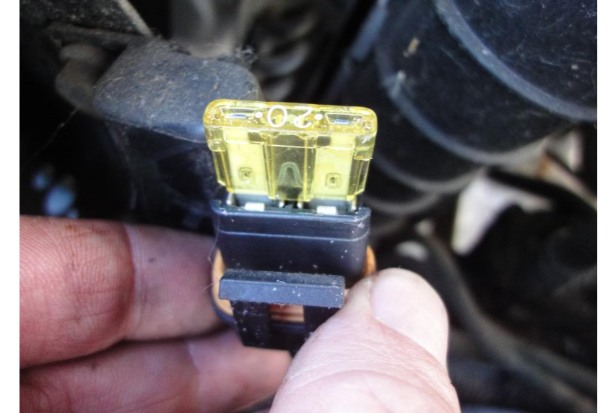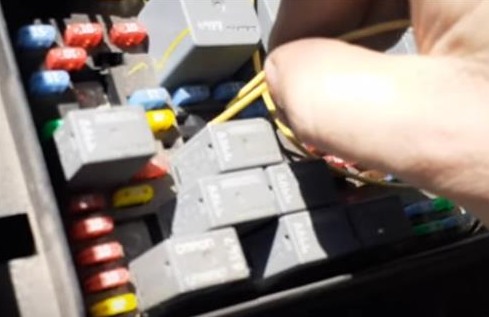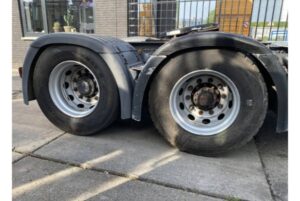
How To The Jump Fuel Pump Relay on a Chevy Truck
Reading below to learn more about the fuel pump relays and how you can bypass them safely.
Your vehicle won’t start if the pump relay isn’t working properly because it can’t pump fuel. You can bypass the fuel pump relay if you can’t fix or replace it right away so that you can still operate your car. To find out how to jump a fuel pump relay, continue reading.
What Does a Fuel Pump Relay Do?
Various factors can cause car fuel pumps to malfunction, but the fuel pump relay malfunction is the most frequent one.
Corrosion or a blown fuse may have caused the relay, which transfers power from the battery to the pump, to stop working. The transmission of electrical current from a car’s battery to its fuel injectors is the main duty of the fuel pump relay.
In order for gasoline to be properly distributed throughout the engine and ignited when necessary, this converts it to a liquid state.
Owners typically become aware of a significant drop in gas mileage as well as a sputtering sound from the engine at idle when a car’s fuel pump starts to malfunction. If so, you must first determine whether the pump relay is malfunctioning or not.
Then, if you don’t want to take the car to the mechanic and spend money on it, you can choose the quick fix by skipping it.
However, speaking with the specialist and allowing him to make a diagnosis would be preferable because he can advise whether you need a new fuel pump relay.
How to Bypass a Fuel Pump Relay?
Although it’s a fairly straightforward process, there are certain safety precautions that must be taken in order to bypass the fuel pump relay safely. When the car does not sense or recognize power from the ignition switch, the fuel pump relay is a safety measure to reset the system.
Things you will need,
- 10 mm socket wrench or socket ratchet set.
- cable jumpers or wire cutters.
First, locate the battery wires coming from each side of the battery and cut them off.
Then, with both of them safely loose, remove the wires from each post on your old fuel pump and connect them to the corresponding posts on your new one.
In order to complete this task, attach a jumper wire that is thinner than four gauges from one battery terminal wire back onto the original wire post.
Now join a jumper wire from your fuel pump’s harness to one of the original posts on the pump. Remove a drive belt from the final link in the chain.
The next step is to attach a jumper wire between the two unconnected posts. This wire must be thicker than four gauges in order to accomplish this. After that, install your new fuel pump and reconnect both battery wires to their original posts.
Is It Safe to Bypass a Fuel Pump Relay?
Let’s examine a fuel pump relay’s operation before learning how to bypass one. The fuel pump relay supplies power to the fuel pump, which is supplied by the vehicle’s powertrain control module. When you start your car, the PCM activates the fuel pump relay, which then powers on the fuel pump.
The fuel pump relay then closes its circuit, allowing the fuel pump to start pumping fuel into the engine. Fuel pump power transfer is prevented when the fuel pump relay is damaged because it cannot complete its circuit.
The fuel pump relay also functions as a timer. When you turn on the car, a timer on it pre-pressurizes the fuel system. Fuel may be pumped at high pressure if the pump relay is bypassed.
Your car’s fuel pump, for example, may suffer damage as a result of this. As a result, it is not recommended to drive the car while the fuel pump relay is bypassed. A damaged fuel pump must be replaced, which is more expensive than repairing or replacing a fuel pump relay.
How to Jump a Fuel Pump Relay
Jumping the relay entails transferring energy from the relay to the fuel pump through an electrical conductor. To transfer the electric current from the PCM to the fuel pump, all you need is a metal conductor.
Steps for Jumping the Fuel Pump Relay
- Before you begin, make sure your car is parked on a level piece of ground.
- Then, lift the hood and search for the relay hub. In most cases, it is situated behind the driver-side headlamp on the right side of the engine compartment.
- All of the relays for the car are in a black plastic box, including the pump relay.
- Remove the cover from the relay center underneath the hood.
- To locate the fuel pump relay, use the cover’s diagram.
- The 4-pin fuel pump relay can now be removed from the relay center.
- Take a 5-inch length of copper wire with a small diameter, and use a wire stripper to remove about 1/2 inch of the insulation from both ends.
- The 4-pin outlet’s upper-left pin slot, which is where the fuel pump relay plugs in, is where you should place one end of the copper wire. This is also where the relay center is located.
- And then plug the other end of the wire into the 4-pin receptacle’s lower-right pin slot, which is where the fuel pump relay connects to the relay center.
- Next, turn the cars on to see if it functions.
- The fuel pump will turn on if the wire’s ends are properly seated.

How to Tell If a Fuel Pump Relay is Bad
Typically, people are unaware that their fuel pump relays are broken until the car won’t start. Here are some simple ways to diagnose a bad fuel pump relay;
The Check Engine Light is On.
The fuel pressure may be affected if the fuel pump relay starts to fail, which will then result in the fuel pressure sensor recording an incorrect value. The failing fuel pressure that causes the engine light to come on will result in the ECU storing a trouble code.
A voltage spike in the pump relay could also result from a defective pump relay. This is brought on by a blown fuse, a shorted fuel pump, frayed wiring, or a blown circuit. The voltage reading will be interpreted by the ECU as an error code, which will activate the engine light.
Rough Acceleration
The fuel pump’s pressure, which affects how much fuel is pumped into the combustion chamber, will be impacted by a damaged pump relay. As a result, acceleration may be impacted by the fuel injection system’s irregular operation.
Stalling Or Idling Engine
Electrical connectivity may be hampered by faulty soldering on the fuel pump relay. This will result in erratic power delivery to the fuel pump. The engine may stall or idle as a result of an intermittent fuel supply.
No Noise from the Fuel Pump
When the ignition is turned on, the fuel pump starts to whirr. The fuel rail’s rising fuel pressure is to blame for this. As the relay timer is not controlling the fuel pressure, a quiet fuel pump is an indication of a failing fuel pump relay.
The Engine is Dead
This is the telltale symptom of a malfunctioning fuel pump relay. An incomplete circuit will stop the fuel pump from working, which will prevent the engine from starting because there won’t be enough fuel in the combustion chambers.
Longer Starting Time
Fuel pressure is impacted by the failing circuit, which may take a while to complete or only complete portions of it. This indicates that it will take some time for the engine to fill up with fuel and start the vehicle.
High Mileage
Lack of fuel pressure regulation may result in increased engine fuel injection and increased fuel usage.
The Car Dies While You Are Driving.
due to a disruption in the fuel supply to the vehicle’s engine.
Fuel Pump Relay Diagnosis
By using this method, you can check for electrical continuity.
- Locate the fuse box and locate the fuel pump relay
- The numbers 30, 85, 86, and 87 can be found under it by lifting it up. You can reinstall the fuel pump relay if you find these numbers.
- Reinstall the relay so you can test the pins with a multimeter while cycling the ignition.
- Ignition on, use a multimeter to check pin 87. The relay is operating if there is voltage. Poor relay circuitry indicates intermittent voltage.
- If you don’t get voltage, see if you can turn on the ignition and get steady voltage on Pin 30. A blown fuse could be the cause of no voltage.
- Make sure pins 85 and 86 are powered continuously. Once the ignition is turned on, they ought to be grounded from the engine control unit.
- Remove the case from it to inspect for any poor soldering if you are experiencing any continuity issues.
- If you encounter any issues, resolder the relay.
Fuel Pump Relay Replacement Cost
- Online or in-person purchases of the fuel pump relay are both options. Depending on the car, the cost should be between $75 and $250. Labor expenses are one of the additional costs associated with replacing the fuel pump relay. The replacement of the fuel pump relay should cost between $90 and $250 on average.
- This depends on the mechanic’s billing strategy, which can be either an hourly or per-job pay rate.
- A mechanic will take between One and Six hours depending on the mechanic’s expertise, the car’s layout and the tools at hand
Why Do You Need to Jump Start the Fuel Pump Relay?
Your fuel pump relay needs to be replaced sooner or later if you drive a car frequently. Relays for your car’s fuel pumps aid in controlling the electrical current that powers them.
Depending on your car, you may find these components in the fuse box or close to the engine. They typically last three to five years. Many problems can arise if your fuel pump relay is not working properly.
To ensure that your vehicle’s relays are still functioning properly, it is always crucial to test them via bypassing before changing them out for new ones.
If the fuel pumps relay isn’t working properly, it won’t be able to make proper contact with the fuel pump terminals, which will prevent the fuel pump from being able to supply enough fuel to your engine.
If this occurs, it’s possible for your car to stall while you’re driving or to stall after starting.
A relay that powers the fuel pump and adds to the engine’s revving is activated when your car is moving. Faster acceleration and better fuel economy are made possible by this.
However, if that relay isn’t functioning properly or has failed, it won’t be able to support the engine’s revving and could lead to a dead battery.



Average Rating